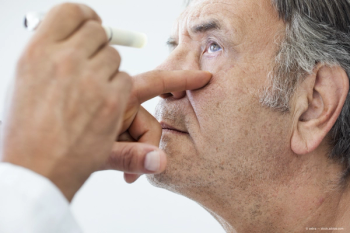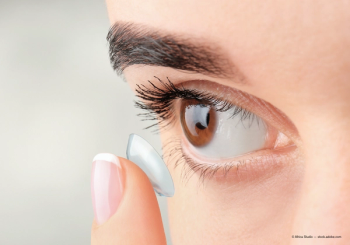
Contact Lenses
Latest News
CME Content


Most ODs could list all the missing items in their contact lens supply line. They could construct a wish list of products they would like to see available in the future. On days when we find ourselves ransacking the contact lens trial room, ODs may think technology is moving too slowly. Perhaps it’s time for some needed perspective.

It’s time to dispel these preconceptions of fitting contact lenses for astigmatism and use new toric lens options as an opportunity to improve patient care.

For many eye care professionals (ECPs), helping patients see, look and feel their best means being able to offer their patients daily disposable contact lenses. The DAILIES® Choice Program is an opportunity to provide patients with a convenient alternative to weekly and monthly replacement lenses by reducing the price barrier for new wearers with up to $200 in savings on a year’s supply of DAILIES® lenses.

Just as ODs develop good habits, there are bad habits that we should avoid. Avoid the following three habits to optimize your patients’ lens wearing experience.

If patients notice a decrease in night vision or have frequent headaches, increased eye fatigue, blurred/distorted vision, the diagnosis could be astigmatism.

At its fourth annual gathering at Vision Expo East, the Global Contact Lens Forum addressed developing technologies with research and development (R&D) scientists, evidence-based eye care, and contact lens practice settings.

As primary-care optometrists, we are the gatekeepers for baby boomers inquiring about cataract surgery. Today’s patients have treatment options available not only to address their lifestyle complaints but to provide them with better vision and possibly reduced dependence on glasses or contact lenses.

With much of the digital revolution occurring after 2008 and most contact lens technology developing well before it, there is an inherent design feature mismatch. The majority of the available contact lenses are not designed for how patients are using their eyes.

In a poll fielded on the Optometry Times website, we asked ODs at what amount of cylinder they prescribed soft toric contact lenses.

A few tips regarding wearing cosmetics and contact lens wear can help our patients wear their lenses with more comfort.

Complex contact lenses, including scleral lenses, have unique fitting considerations that may be augmented with additional optic scans, says Jeffrey Sonsino, OD, FAAO, of Nashville, TN, at SECO 2017.

When do you move from a spherical to a toric contact lens? Let us know!

Depending on where you live, spring is here-or at least on its way. It’s the time of year to thaw out along with the trees, grass, and flowers. With spring comes our promise to get ourselves into shape for the summer, and life gets busier with more outdoor activities for the whole family.

Patients don’t have to wait for 2020 to achieve 20/20 vision at near without spectacles or contact lenses. Rather, the advancements we have seen just in the past few years should be enough to help manage their expectations.

Contact lenses are medical devices. I can write it again and again. These are not commodities.

Before the new year gets too far along, let’s take a brief look at the happenings in the pages of Optometry Times during 2016.

Try these seven strategies to improve your keratoconus contact lens fitting and offer better outcomes to your patients.


Differentiate yourself in this era of heightened competition

Do more than hand patients a box-prescribe instead of recommend

Contact lens retail site Hubble launched last Tuesday, offering contact lens wearers daily disposable contact lenses at a lower price and planning to drive patients into OD offices for exams.

Stick to your usual prescribing habits is the advice given by contact lens experts in the wake of the recent recall of peroxide lens care system Peroxiclear by Bausch + Lomb.

Patient horror stories can happen at any time of the year, but late October makes these tales particularly chilling.

A day in the life of a female patient provides clues that can help










































.png)


